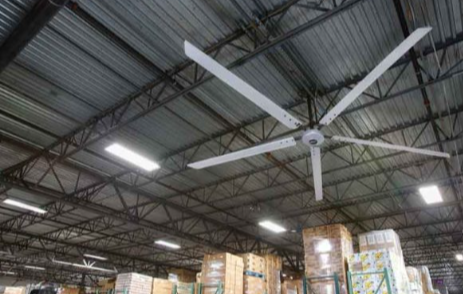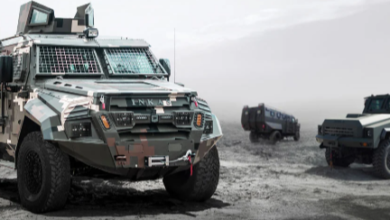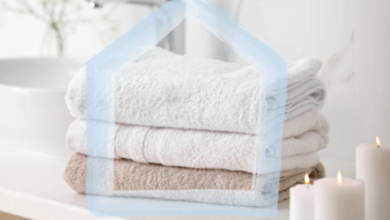Seasonal Benefits of HVLS Fans: Cooling in Summer and Heating in Winter

High Volume Low Speed (HVLS) fans have gained popularity in recent years due to their energy efficiency and versatility. These large-diameter fans, typically ranging from 7 to 24 feet, operate at low speeds to move a substantial amount of air, making them an ideal solution for various settings including warehouses, factories, commercial spaces, and even residential areas. One of the key advantages of HVLS fans is their ability to provide year-round comfort by enhancing both cooling in summer and heating in winter. This article explores the seasonal benefits of HVLS fans and how they contribute to energy savings and improved indoor air quality.
Cooling in Summer
Efficient Air Movement
During the hot summer months, HVLS fans are highly effective at creating a cooling effect. Unlike traditional small fans that create a concentrated airflow, HVLS fans move large volumes of air gently and evenly across a wide area. This results in a more uniform temperature distribution and a reduction in perceived temperature, often referred to as the “wind chill effect.” By circulating air efficiently, HVLS fans can lower the effective temperature by up to 7-11 degrees Fahrenheit, providing significant relief in hot environments.
Energy Savings
HVLS fans can significantly reduce the reliance on air conditioning systems. By improving air circulation, these fans can enhance the performance of HVAC systems, allowing them to operate more efficiently. This synergy can lead to substantial energy savings, as air conditioners can be set to higher temperatures while still maintaining comfort. In large commercial or industrial spaces, this can translate to considerable cost reductions in cooling expenses.
Improved Comfort and Productivity
In workplaces such as warehouses and factories, maintaining a comfortable temperature is crucial for the well-being and productivity of employees. Excessive heat can lead to heat stress, fatigue, and decreased concentration, all of which can affect work performance and safety. HVLS fans help mitigate these issues by providing a consistent and gentle airflow, which keeps employees cool and comfortable, ultimately enhancing productivity.
Heating in Winter
Destratification
During the winter months, one of the primary challenges is managing stratified air layers. In large spaces, warm air tends to rise and accumulate near the ceiling, while cooler air stays at the floor level. This temperature gradient leads to inefficient heating and increased energy consumption, as heating systems have to work harder to maintain a comfortable temperature at ground level. HVLS fans address this issue through a process called destratification.
Destratification involves gently mixing the air layers to eliminate temperature gradients. By running HVLS fans at a low speed in reverse or forward direction, warm air is pushed down from the ceiling and mixed with cooler air at the floor level. This process results in a more uniform temperature distribution throughout the space, reducing the workload on heating systems and leading to energy savings.
Read more Regulations and Legal Considerations for Armored Ford Cars
Enhanced Heating Efficiency
By promoting even air distribution, HVLS fans enhance the efficiency of existing heating systems. When warm air is evenly distributed, thermostats can be set to lower temperatures without compromising comfort. This not only reduces energy consumption but also extends the lifespan of heating equipment by preventing overuse. In large industrial or commercial settings, these savings can be substantial, contributing to a more sustainable and cost-effective operation.
Improved Air Quality
HVLS fans also play a role in improving indoor air quality during the winter months. In tightly sealed buildings, indoor air can become stale, leading to the accumulation of pollutants, allergens, and moisture. The gentle air movement created by HVLS fans helps to disperse these contaminants and prevent the buildup of humidity, which can lead to mold growth and other air quality issues. By maintaining a constant flow of air, HVLS fans contribute to a healthier indoor environment.
Year-Round Benefits
Versatility and Adaptability
One of the standout features of HVLS fans is their versatility. They can be used in a variety of settings, including commercial buildings, industrial facilities, agricultural operations, and even residential spaces. Their ability to provide both cooling and heating benefits makes them a valuable investment for year-round comfort. Additionally, modern fans for warehouses often come with variable speed controls and programmable settings, allowing users to customize their operation based on seasonal needs.
Reduced Environmental Impact
HVLS fans contribute to a reduction in overall energy consumption, which in turn lowers greenhouse gas emissions associated with heating and cooling. By decreasing the reliance on traditional HVAC systems, HVLS fans help reduce the carbon footprint of buildings and operations. This makes them an eco-friendly choice for businesses and individuals looking to adopt more sustainable practices.
Cost Savings
While the initial investment in HVLS fans can be higher compared to traditional fans, the long-term cost savings are significant. By enhancing the efficiency of heating and cooling systems, HVLS fans lead to lower energy bills. The extended lifespan of HVAC equipment, resulting from reduced wear and tear, also contributes to cost savings. Moreover, the increased comfort and productivity of occupants can have indirect financial benefits, particularly in commercial and industrial settings.
Conclusion
HVLS fans offer a versatile and energy-efficient solution for maintaining comfortable indoor environments throughout the year. Their ability to provide effective cooling in summer and enhance heating efficiency in winter makes them a valuable addition to any space. By promoting uniform temperature distribution, improving air quality, and reducing energy consumption, HVLS fans contribute to both cost savings and environmental sustainability. Whether in a large warehouse, a commercial building, or a residential setting, the seasonal benefits of HVLS fans make them a wise investment for year-round comfort and efficiency.







